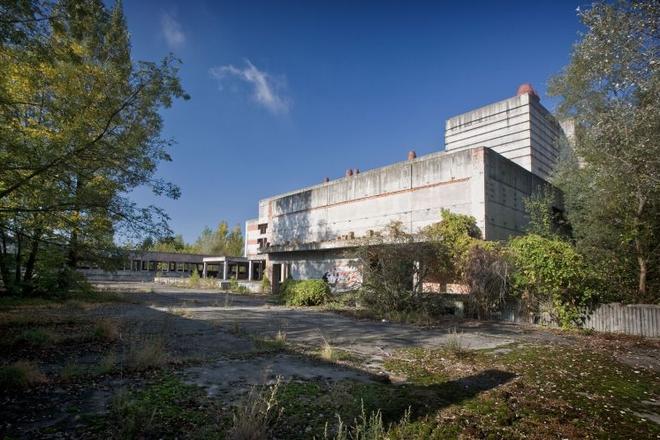PLANS to complete the Rázsochy hospital building, which was originally conceived as a state-of-the-art medical facility for Bratislava, should be scrapped in favour of constructing a brand new teaching hospital. The Health Ministry delivered this message at the cabinet session on July 3, and the ministers agreed. The cabinet requested that the ministry conduct a feasibility study of construction of the new facility lasting through the end of January. Thus, the fate of Rázsochy, whose construction was launched in the 1980s and is still far from complete, remains unclear.
“We tried to look, for the first time, at the medical care we need to provide in Bratislava through the prism of what Bratislava patients actually need and not whether Rázsochy, yes or no,” Health Minister Zuzana Zvolenská said on June 28 when introducing the plan to build the new medical facility.
The idea of the Health Ministry, in cooperation with Comenius University and the Slovak Academy of Sciences (SAV), is to build a biomedicine, educational and research park (BioMedPark), whose concept is based on the overlapping of science, research, education and providing excellent health care.
The Health Ministry is proposing to build the facility on the premises of St Michael’s Hospital (the so-called military hospital) which sits behind the Bratislava borough of Patrónka. This location allows for the physical interconnection of the future hospital with the nearby SAV institutes. Medical and pharmaceutical faculties would be built there later. The military hospital would move to Cintorínska Street in the city centre. The BioMedPark is projected to have a capacity of 775 beds and 40,000 hospitalisations annually. The price tag of the project is €250 million without VAT, i.e. half of the €500 million needed to complete Rázsochy, the SITA newswire wrote.
The ministry cites three reasons for constructing the BioMedPark.
“The first and most important reason is the quality and the form of provided health care in the capital of the Slovak Republic, Bratislava,” the ministry writes in the proposal to build the new hospital. “The condition of hospitals in Bratislava is insufficient and does not provide a modern and complex type of health care, nor hospital accreditation at the international level.”
The second reason has to do with older hospital buildings no longer being economically sustainable. The third reason pertains to the unsatisfactory conditions for pre- and post-graduate and specialised education and experimental and clinical research.
The Health Ministry realises that there are no state funds to finance construction of the new facility. There are several potential means of funding, one of which would involve a public–private partnership (PPP) scheme.
Another possibility is for a private investor to build and operate the facility. The state would be the owner and would guarantee a long-term contract with a health insurance company. The Health Ministry will deal in detail with financing of the project as well as with the future of Rázsochy in the feasibility study.
History of Rázsochy
The idea to build Rázsochy, a state-of-the-art hospital in Bratislava, was born more than 30 years ago. But what started out as an ambitious project to serve patients from across Slovakia, and to house medical students, resulted in a huge but unfinished complex which was later left to rot, and has been ravaged by scavengers seeking scrap metal and other materials.
The construction of Rázsochy was launched in 1987, two years before the fall of the communist regime in Slovakia. The complex was supposed to have been completed in 1993, but construction was halted in 1990. The second Mikuláš Dzurinda government halted the project completely in 2003, the Pravda daily wrote. Today only the skeleton of the huge facility remains.
So far the Rázsochy complex has swallowed about €33 million, while the land on which it stands is estimated to be worth almost €19 million. If no medical facility is built there, the state will have to return it to its original owners, according to a 2012 article in Zdravotnícke Noviny, a biweekly publication on health care in Slovakia.
Rázsochy returned to the spotlight after the cabinet of Prime Minister Robert Fico declared in its four-year programme that it planned to complete the medical complex, finances allowing.
According to Zvolenská, completion of Rázsochy makes no sense since so much time has passed since the complex was designed.
“Time went ahead, materials developed, everything was modernised,” said Zvolenská. Experts added that medical technologies and design imperatives for hospitals have changed.
Poor condition of Slovak hospitals
Hospital facilities in Slovakia are, on average, 34.5 years old, while as many as 22 percent of them were built more than 50 years ago, SITA wrote, citing data from the Operational Programme Health Care. About 26 percent out of all of the country’s hospitals are 30 to 50 years old. The rest, considered to be in the category of new hospitals, are up to 30 years old.
“In general a large portion of hospitals are exceeding their lifespan and it is possible to consider them depreciated,” wrote the paper, explaining that this does not mean that these buildings are unusable. But this is an important signal of the current condition of the infrastructure of the country’s hospitals and the need for their renovation.



 Rázsochy (source: SME)
Rázsochy (source: SME)